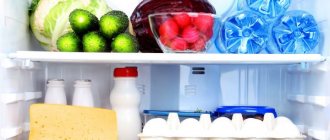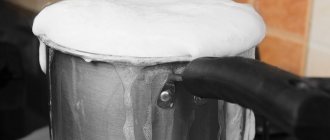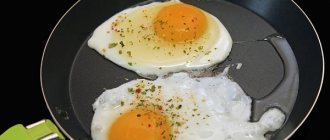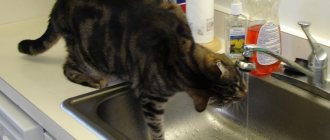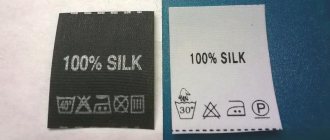What is this text about? In this text we will answer the following questions: how to bleach yellow plastic in the refrigerator; yellowed plastic on the microwave; how to bleach yellowed plastic on the refrigerator; how to bleach; how to bleach yellow plastic;
Light-colored plastic can be found in any home: window sills, elements of household appliances or electronics, toys, decorative items and much more. In most cases, after a couple of years, the white color gives way to yellow and looks unpresentable. This happens due to the influence of environmental factors, but there is no need to rush to purchase new products. Experienced housewives are ready to share their secrets on how to remove yellow stains on plastic, how not to damage the material and how to preserve the result for a long time.
Why does plastic turn yellow?
There are many reasons for yellowing of plastic, the main one being poor quality material. Exposure to sunlight or temperature changes can affect the shade. It is for these two reasons that a plastic window sill, refrigerator or microwave oven handles often turn yellow.
Other common causes include improper care, use of chemicals and operating conditions. If the room is often smoked, cooked on a gas stove and rarely ventilated, then the white plastic on furniture or electronics will quickly deteriorate. It is a synthetic polymer that upon contact with oxygen enters into a chemical reaction. As a result, sooner or later the surface oxidizes, acquiring a grayish or yellowish tint, so you need to know how to bleach plastic.
Special wipes and sprays
Despite the fact that special cleaning wipes and sprays are originally intended for monitors, they are also good for removing yellowness from the plastic of the refrigerator.
When using them, there are no scratches or damage left on the surface, and the plastic itself quickly acquires an attractive appearance.
It is equally important to take care of the prevention of yellowness. To do this, it is recommended to protect the plastic elements of the refrigerator from direct sunlight and tobacco smoke, as well as regularly wipe all surfaces of the equipment and remove dirt from them.
- Author: Natalya32
Rate this article:
- 5
- 4
- 3
- 2
- 1
(1 vote, average: 5 out of 5)
Share with your friends!
Preparation for bleaching surfaces
You should not immediately start work without learning the nuances of cleaning, otherwise you may not get a good result. First you need to prepare the yellowed surface. How to effectively bleach plastic from yellowness:
- Household chemicals. First you need to clean the areas from old grease, dust and other contaminants. It is better to do this with a mild detergent, such as dishwashing gel.
- Sponges and rags. You cannot use any brushes (especially metal ones) to remove stains on the handles of a refrigerator, stove, or microwave oven, otherwise the surface will be severely scratched. You should give preference to a melamine or regular sponge.
- Special napkins. In household chemical stores, you can find wipes that are already impregnated with a gentle whitening agent. You can even use them for electronics without fear of damage.
Note! Before you remove yellowness and dirt from plastic, you will have to remove the curtains, remove indoor flowers and decor that interfere with cleaning. You need to work only in protective equipment to avoid an allergic reaction.
Useful tips for caring for your refrigerator
When purchasing an expensive and necessary item, we want it to last as long as possible and at the same time look as good as possible. A refrigerator or refrigerator is a necessary thing in every home and requires constant care. Systematic care of them and following some useful operating tips will extend their service life and maintain a decent appearance.
- If there is a power outage in your home, place a metal object in the freezer to slow down defrosting.
- If a large amount of ice forms in the freezer or freezer, place a hot heating pad there and this problem will be solved.
- After cleaning, wipe the back of the freezer with glycerin to reduce ice build-up.
- When deciding where your refrigerator will be located, keep in mind that it should be placed as far as possible from heat sources.
- If your assistant does not have a “no frost” system, defrost it at least twice a month, this way you will avoid the build-up of excessive ice and increase its service life.
- If your refrigerator smells musty, place half a lemon or a few activated charcoal tablets on the shelves.
- Remember to regularly wash and clean the unit, and do not load it with excess products. Remember that cold air must circulate between them.
To keep the refrigerator clean, it is recommended to constantly monitor its condition and not be lazy to carry out regular cleaning. And compliance with operating requirements will save money and extend the life of an expensive item.
Plastic is a material that is often used in the manufacture of household appliances, as well as in the production of windows and other products. Easy to clean, resistant to acids and alkalis, it is not afraid of water. However, plastic has one unpleasant quality - the ability to turn yellow.
Effective means for whitening plastic
The modern market offers a huge number of cleaning substances: powders, gels, solutions, soap. They are not always safe for humans, so before cleaning plastic with bleach to remove yellowness, you must wear gloves. As a rule, bleach is designed for heavy soiling that cannot be removed with any other product. Cosmoklar milk for cleaning white plastic and Bauset are considered the most effective; Bon cleaner is a more affordable option.
For cleaning in the kitchen and bathroom, it is recommended to choose Persol, Domestos, Cif, Grass, Prosept for bleaching plastic. Many of them are produced specifically for plastic surfaces, but it is better to test the substance on a small area before first use. It is often necessary to repeat the cleaning process 2-3 times to achieve the desired result. Small parts that are being removed can be soaked overnight in a solution of water and any product containing chlorine. In the morning, just rinse the plastic elements with clean water and wipe dry with a soft cloth.
Aggressive methods
In advanced cases, you can clean yellow plastic utensils using hydrogen peroxide (perhydrol). Soak a cotton pad in peroxide and completely treat the plastic, previously cleaned of grease and dust, with it. The procedure should be performed at least 3 times. To enhance the effect, it is recommended to prepare a solution based on peroxide and hair bleach. 2 tbsp. l. dissolve peroxide and clarifier in 1 liter of water. Use a moistened sponge to treat the entire refrigerator and it will shine white again.
Chlorine and baking soda help bleach small items that can be removed and soaked in the solution overnight. You can use any substance containing chlorine: bleach, stain remover, etc. If the result does not satisfy you, dissolve 1 tbsp. l. technical soda and laundry detergent in a liter of water. Soaking in this product for 10 hours or more will help even in the most advanced cases.
Laundry soap
The first thing that comes to mind when you need to clean a plastic product is laundry soap. It is effective both when washing white clothes and when cleaning window sills and countertops. However, it will only help if the material has changed color due to dust or grease. How to whiten yellowed plastic:
- grate the soap on a medium grater or finely chop with a knife;
- pour a small amount of warm water to make a soap solution;
- wash the contaminated areas with intense circular movements using a sponge or soft brush;
- leave the plastic soapy for 30-60 minutes;
- Remove soap residue with warm water.
If the structure of the plastic element has become very dark, then this method will not work. It is recommended to repeat the procedure several times a month and try to wipe the surfaces more often with a damp cloth.
Prevention measures
There are several rules that will help prevent the appearance of yellowness:
- regularly treat surfaces with a soap solution (0.5 bars of laundry soap per 1 liter of water);
- After each treatment, wipe the surfaces dry to avoid streaks. In addition, this will prevent mold from appearing on the windowsill;
- Do not use abrasive substances: powders and some pastes. If the plastic is scratched, it will quickly become dirty and yellow;
- frequent ventilation will ensure a longer life for plastic products;
- If possible, do not expose PVC to sudden temperature changes or strong heat;
- use plastic products only for their intended purpose;
- Protect plastic from sunlight. For example, you can lay out beautiful napkins on the windowsill or put flowers on it.
Vinegar
When using vinegar, you should use gloves and a face mask, because the smell of the product is not pleasant. In addition, it is important to avoid getting vinegar essence in your eyes, and wash your hands well after work. Yellowness will be a thing of the past if you treat the stains with vinegar using a cotton pad during cleaning; it is not necessary to wash it off.
Housewives know how to whiten yellowed plastic; one way is to use vinegar and baking soda together. Sprinkle soda generously on the stains, soak a sponge with acetic acid (don’t forget rubber gloves!) and rub the stained areas with a little force. Afterwards, rinse off the mixture with cool water; you may need to repeat the procedure.
Ethanol
The product should be applied liberally to a dishwashing sponge and wiped over the yellowed plastic. Safety precautions must be observed, in particular the use of protective gloves.
Some plastic elements are susceptible to the aggressive effects of alcohol, so before using this method, it is recommended to test the product on inconspicuous areas of the equipment.
Is it possible to bleach yellowed plastic?
Definitely, plastic can be bleached from yellowness. If the item has changed shade, you must first try to return it to whiteness using available methods. If there is no result, it is recommended to pay attention to bleaches in the store.
How to bleach yellowed plastic on a refrigerator
How to wash the rubber band of a refrigerator (read more...)
Before painting, you should choose the right coloring element.
The substance must be durable, non-drip and protect the surface from damage. Otherwise, you will soon have to deal with scratches on the surface again. How to clean the outside of a refrigerator from yellowness There are several explanations for why yellow spots appear on the body and inside the refrigerator. Among them are: How to bleach yellowed plastic on a refrigerator
Other means for removing yellowness (read more...)
Do not use aggressive or abrasive compounds, rough hard brushes or scratchy brushes for cleaning.
Otherwise, scratches and cracks will form on the surface, which will trap dirt. How to bleach yellowed plastic Housewives often use alcohol or acetone. It can effectively bleach plastic, but it easily damages products, destroys the structure of the material, and removes the top layer of coating. Therefore, choose aggressive solvents only for rough and thick plastics. Before use, test the effect of the composition on an inconspicuous area. How to bleach yellowed plastic on a refrigerator
What not to use to remove yellow stains from the refrigerator
Despite the expected high efficiency, it is prohibited to use the following to remove yellowness:
- knives and other sharp objects;
- scrapers for pots and pans;
- sandpaper;
- large abrasives;
- acids.
They can damage the surface, leaving scratches or even larger stains on it that will be impossible to remove.
The effectiveness of chemistry and traditional methods in getting rid of yellowness has been proven by many housewives. But it’s still better not to experiment and, before using a new method, first test its effect on a small area of equipment hidden from view.
Chlorine bleaches or stain removers
(read more...)
This method will help get rid of yellowness caused by old fat deposits or soot.
To do this, just lather a sponge, soft brush or napkin with detergent or laundry soap and thoroughly rub the yellowed surface. Let stand for 10-15 minutes, rinse thoroughly and wipe with a dry towel. If the plastic has turned yellow: 10 surefire ways to return it to its original whiteness Due to the fact that plastic does not react chemically with alcohol solutions (methanol, ethanol, isopropanol, etc.), they can be safely used to bleach yellowed stains. But to be sure of a successful outcome, it is better to check the reaction of a particular plastic surface to such a radical substance. To do this, walk (with rubber gloves!) over the most inconspicuous area with a cotton pad soaked in alcohol; if everything goes well, then you can safely wipe all the yellowed areas. There is no need to rinse off alcohol solutions, but the room must be ventilated.
How to get rid of the smell inside the refrigerator
Sometimes an unpleasant smell, for example, from spoiled food, seems to eat into the inner surface of the refrigerator, and getting rid of it can be quite problematic.
First, thoroughly wash the entire inner surface with any detergent and wipe dry. Then take half a fresh lemon and wipe the entire surface with it.
Leave the refrigerator for two to three hours and then rinse with cool water.
Other methods:
- Dilute baking soda with water and treat the surface, then rinse.
- You can treat the surface with a sponge generously soaked in hydrogen peroxide.
- Use an aqueous solution of regular table vinegar.
- Sometimes using ordinary toothpaste has a positive effect. Apply it to a sponge moistened with water, foam a little and treat the surface, and after half an hour, rinse everything off.
IMPORTANT: before you start getting rid of odors, you must thoroughly wash the entire inner surface and door rubber, and wipe all shelves and containers.
You can thoroughly clean the freezer and get rid of the smell inside it using coffee grounds. In this case, it will act as a delicate abrasive that allows you to get rid of even old stains. Just remember to thoroughly wash the surface to remove any coffee particles after use.
Causes of yellow spots on plastic surfaces
Various objects are made from white plastic: from small parts to large appliances (washing machine, refrigerator, microwave, air conditioner). Very often the window sill, slopes and frames on plastic windows change color. They need to be washed constantly, but it is not possible to get rid of the yellowness. It appears for the following reasons:
- partial disintegration of the coating due to exposure to ultraviolet rays (from the sun);
- temperature fluctuations;
- additives that are included in the composition of materials.
These factors explain why windows change color more often than other plastic objects. They are influenced by almost all of the above reasons.
Why is there a tea bag in the refrigerator?
Many housewives wonder: why store used tea bags in the refrigerator? After all, such recommendations can be found on some forums, and there are corresponding pictures on the Internet.
It's very simple - a used tea bag perfectly absorbs unpleasant odors. The bag must be dried before placing it in the chamber. If you renew the bags every week, the effect will be much better.
